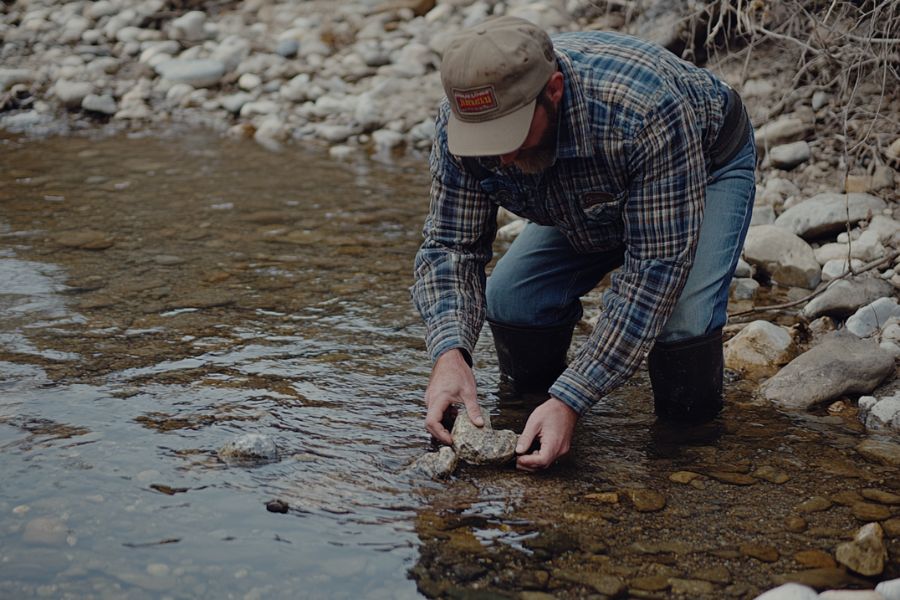From the Delaware River to the Ohio border, from Lake Erie’s shores to Maryland’s edge, Pennsylvania’s diverse landscape holds hidden treasures. But where to look for moonstone in such a big state?
Moonstone hunters, your search ends here! We understand the frustration of fruitless expeditions and wasted weekends.
That’s why we’ve scoured the Keystone State to bring you the 9 best places to find moonstone. Our carefully researched list will save you time and energy, ensuring you’re looking in the right spots.
Get ready to uncover these ethereal gems in Pennsylvania’s most promising locations.
How Moonstone Forms Here
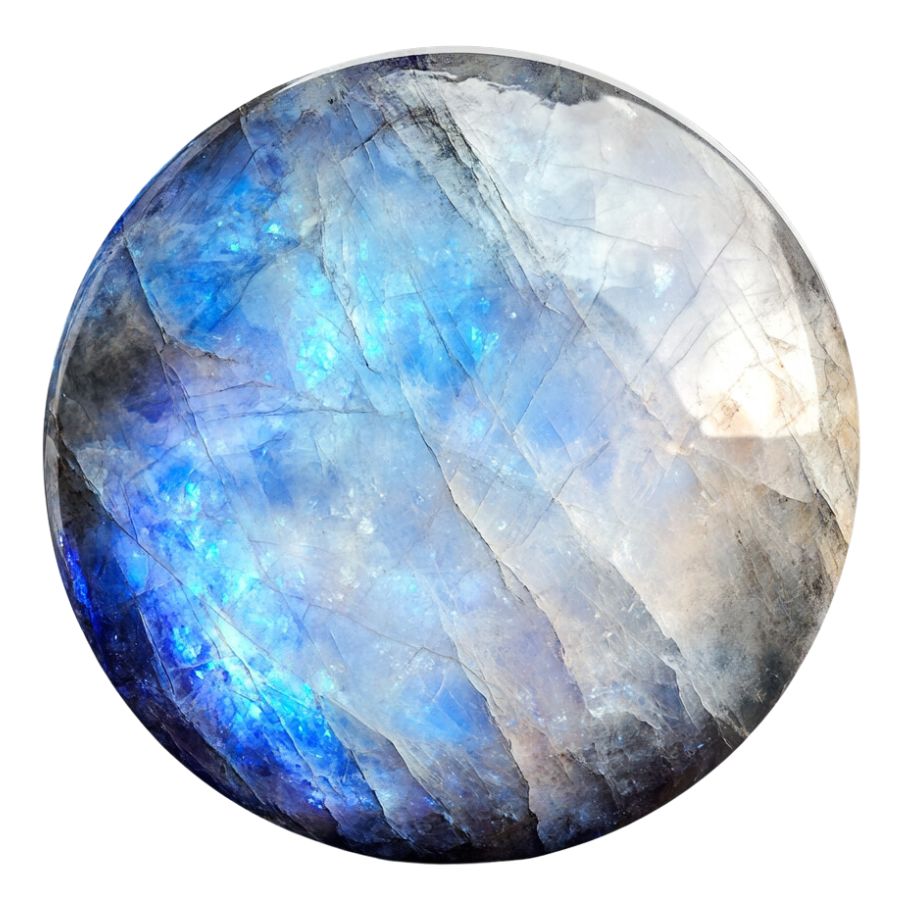
Moonstone starts as feldspar, a mineral made of aluminum and silicate. As the rocks cool slowly, two types of feldspar—orthoclase and albite—separate into thin layers. As the layers solidify, they create the stone’s unique internal structure.
The stone’s color, usually milky white with a blue or peach glow, depends on the thickness of these layers and how they catch the light.
When light enters the stone, it scatters between these layers, producing a moonstone’s signature shimmering glow called adularescence. This optical effect makes it appear as if light is floating beneath the surface.
Over millions of years, plate tectonics push the moonstone deposits closer to the surface where they can be mined. The rarity and specific geology needed to create moonstones add to their mystique as one of the world’s most magical gemstones.
The Types Of Moonstone
Our state is a treasure trove of stunning moonstone varieties. These natural wonders come in various forms, each with its own unique charm and allure:
Blue Moonstone
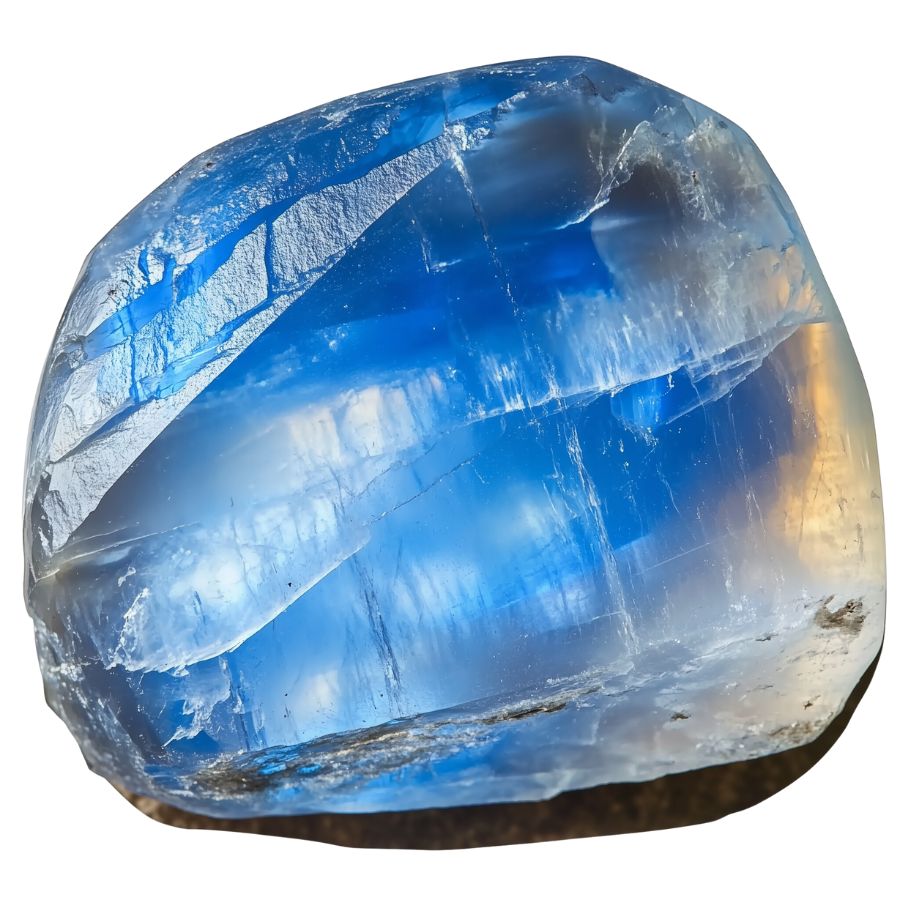
Blue Moonstone is known for its transparent to translucent body with a floating blue sheen on the surface. This sheen, called adularescence, is caused by light reflecting off layers of minerals within the stone.
The most prized Blue Moonstones have a strong blue color and perfect clarity. This makes them stand out from other types, which might be colorless or milky.
What’s special about Blue Moonstone is its ethereal glow. The adularescence creates a soft, shimmering light beneath its surface. This unique optical effect, combined with its rarity, makes it popular among collectors and jewelry enthusiasts.
Rainbow Moonstone
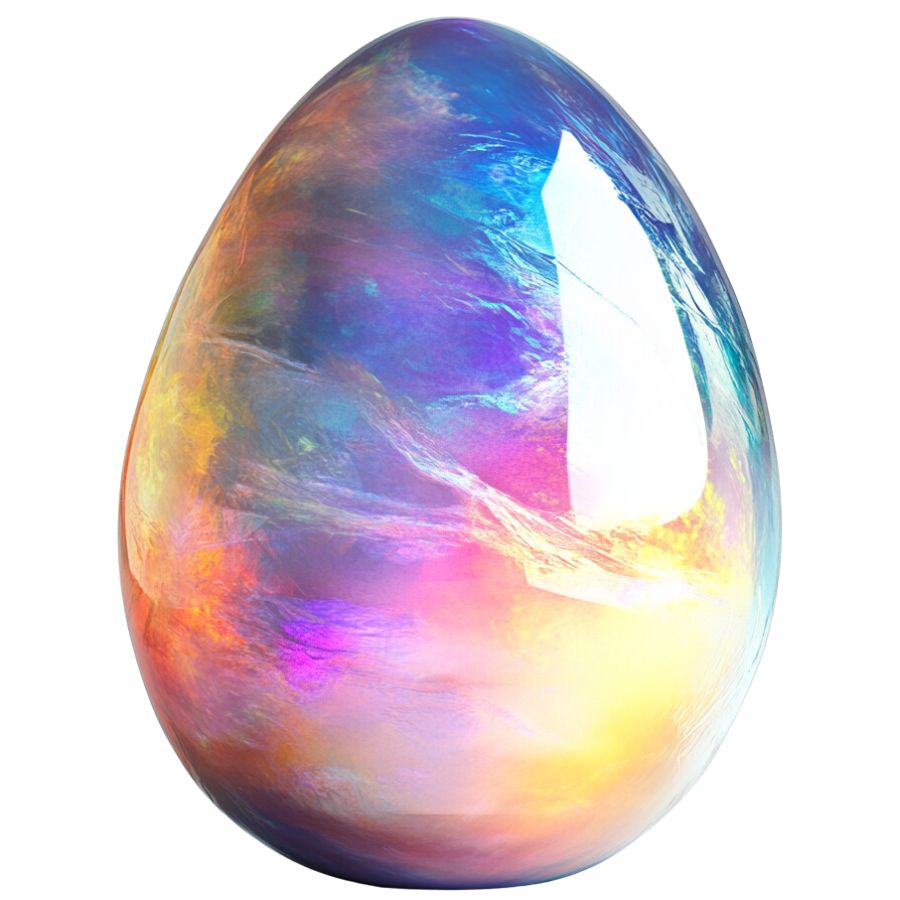
Rainbow Moonstone is famous for its labradorescence, a colorful sheen that shows a spectrum of colors like blue, yellow, orange, and purple. This effect is especially striking against its white body color, giving it a radiant appearance.
Unlike traditional moonstones, Rainbow Moonstones’ play of colors is more vivid and varied. It’s often confused with labradorite but can be distinguished by its pearly sheen and more transparent body.
Some Rainbow Moonstones contain inclusions of black tourmaline, visible in untreated stones. This gemstone gained popularity during the Art Nouveau period and continues to be favored in modern jewelry for its unique optical effects.
Pink Moonstone
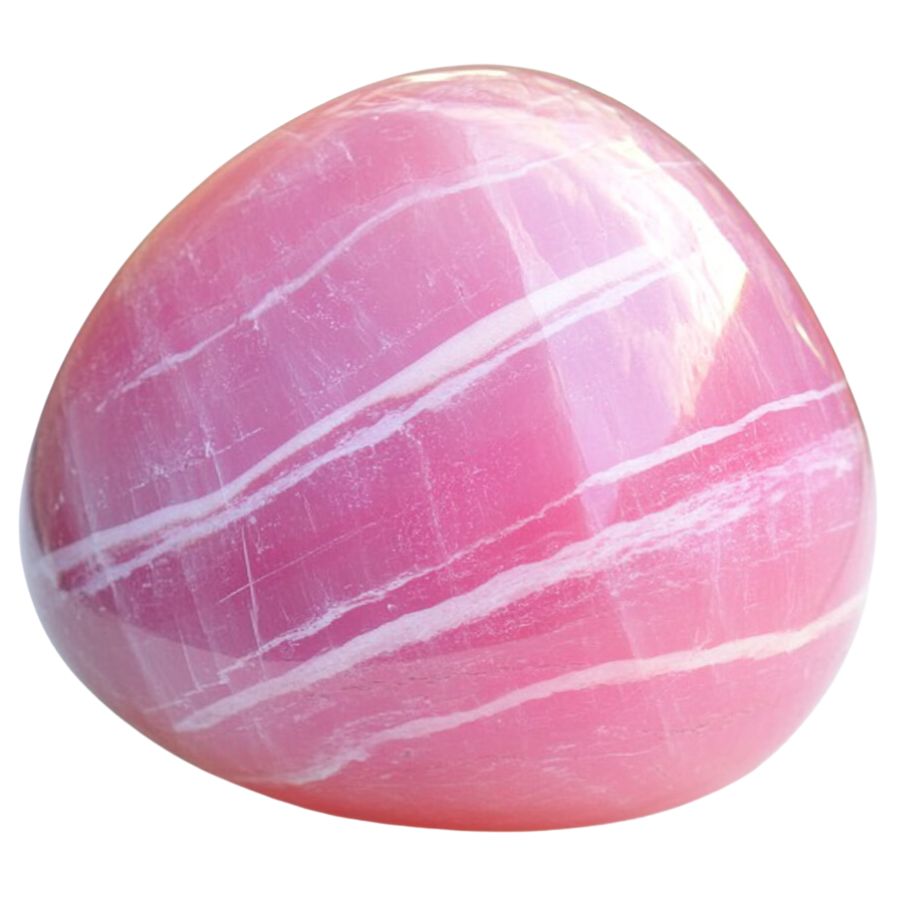
Pink Moonstone shows a delicate pink or peach hue, ranging from honey to beige. Its color is soft and subtle, setting it apart from other moonstones with more vibrant shades.
This stone has a pearly or vitreous luster and is generally translucent. High-quality Pink Moonstones often display a white sheen on the surface. Some specimens can even show a cat’s eye or star effect due to their unique internal structure.
Pink Moonstone is one of the rarest varieties of moonstone. Its delicate color and unique optical effects make it highly sought after. Unlike Pink Opal, which is more opaque, Pink Moonstone is characterized by its iridescent sheen.
Star Moonstone
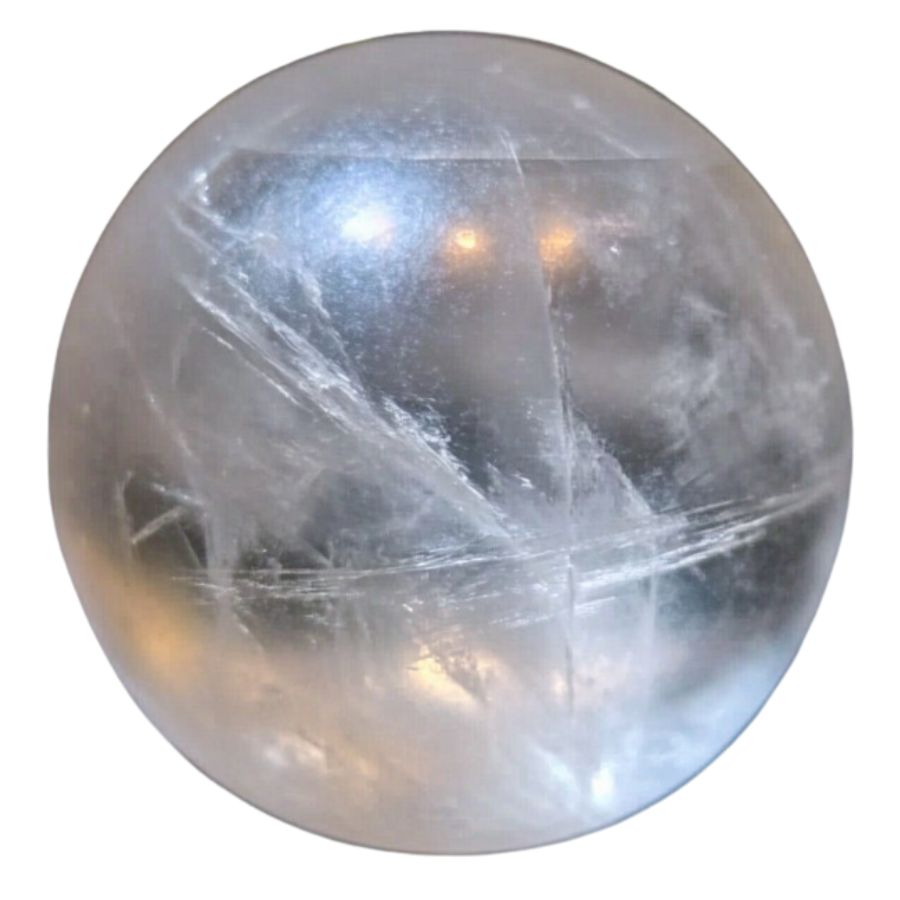
Star Moonstone shows a unique optical effect called asterism, creating a four-pointed star pattern on its surface. This happens because of needle-like inclusions in the stone that reflect light in a special way.
These moonstones are usually translucent to opaque, with colors ranging from colorless to shades of blue, gray, or white. The star effect is best seen when the stone is cut into a cabochon shape.
Star Moonstone is rarer than other types, making it highly desirable. The strongest and most well-defined stars are often found in specimens from Sri Lanka.
Peach Moonstone
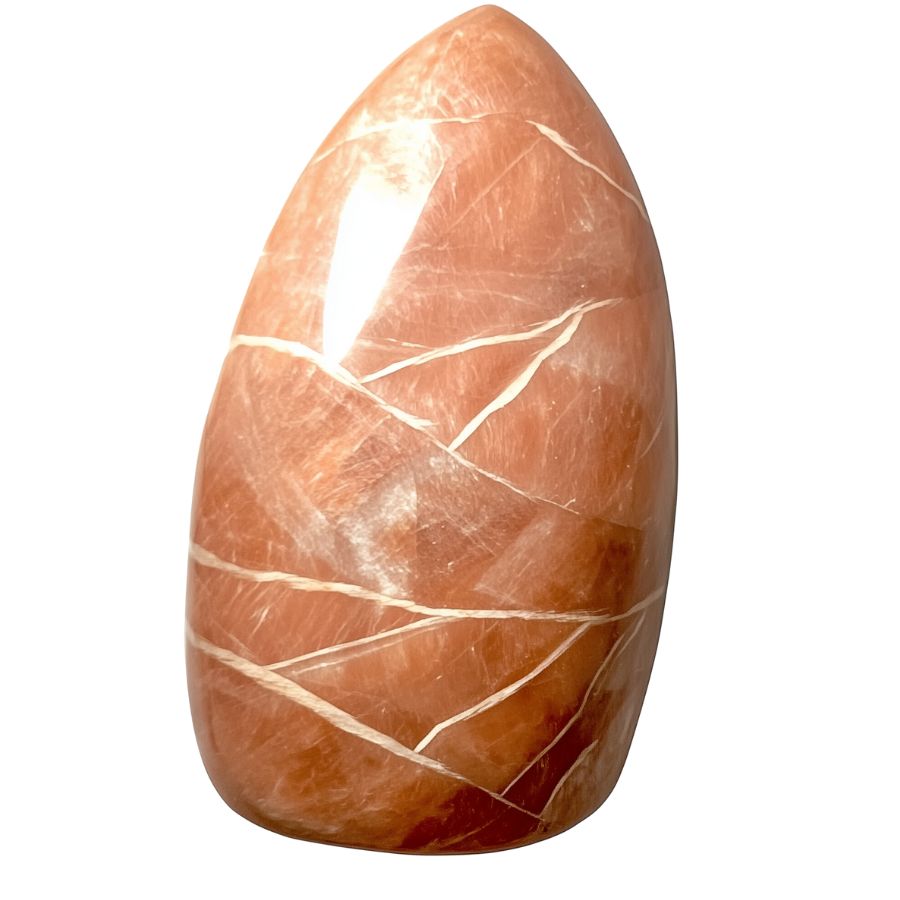
Peach Moonstone stands out with its soft peach or orange hue, ranging from pale to more intense shades. It has a shimmering effect called adularescence, which creates a glowing appearance under certain light.
Unlike other moonstones, Peach Moonstone’s glow is more subdued and warm-toned. It’s generally translucent to semi-transparent, allowing light to pass through and enhance its beauty.
What’s special about Peach Moonstone is its rarity. This scarcity makes it desirable among collectors and jewelry makers.
Its warm tones are particularly favored in designs aiming for a soft, romantic look. The unique color and rarity of Peach Moonstone set it apart in the world of gemstones.
Brown Moonstone
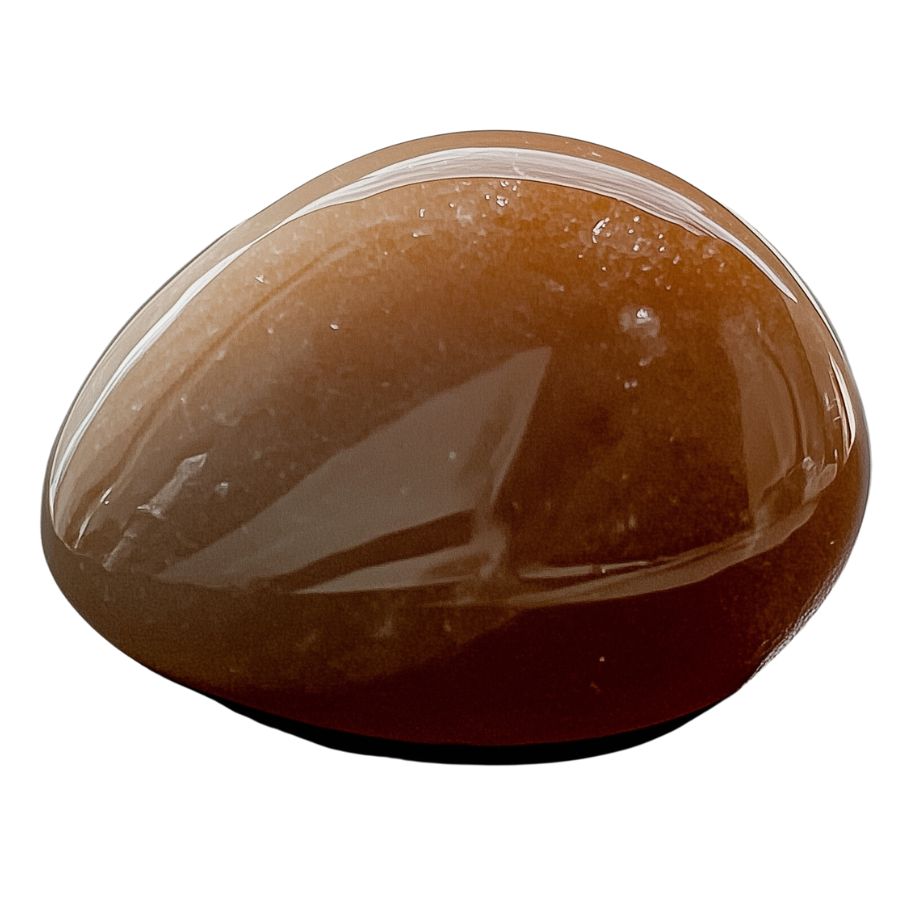
Brown Moonstone has a warm, earthy color that ranges from light honey to deep chocolate brown. It’s translucent to opaque and shows the typical moonstone glow, caused by light scattering between layers of different minerals inside the stone.
What makes Brown Moonstone unique is its rarity compared to other colors like white, gray, and rainbow. The brown color comes from iron impurities in the stone.
Brown Moonstone doesn’t show a strong play of color or iridescence like other moonstones. Its subtle beauty lies in its rich, earthy tones and soft glow. This makes it a distinctive choice for those who appreciate understated elegance in their stones.
Cat’s Eye Moonstone
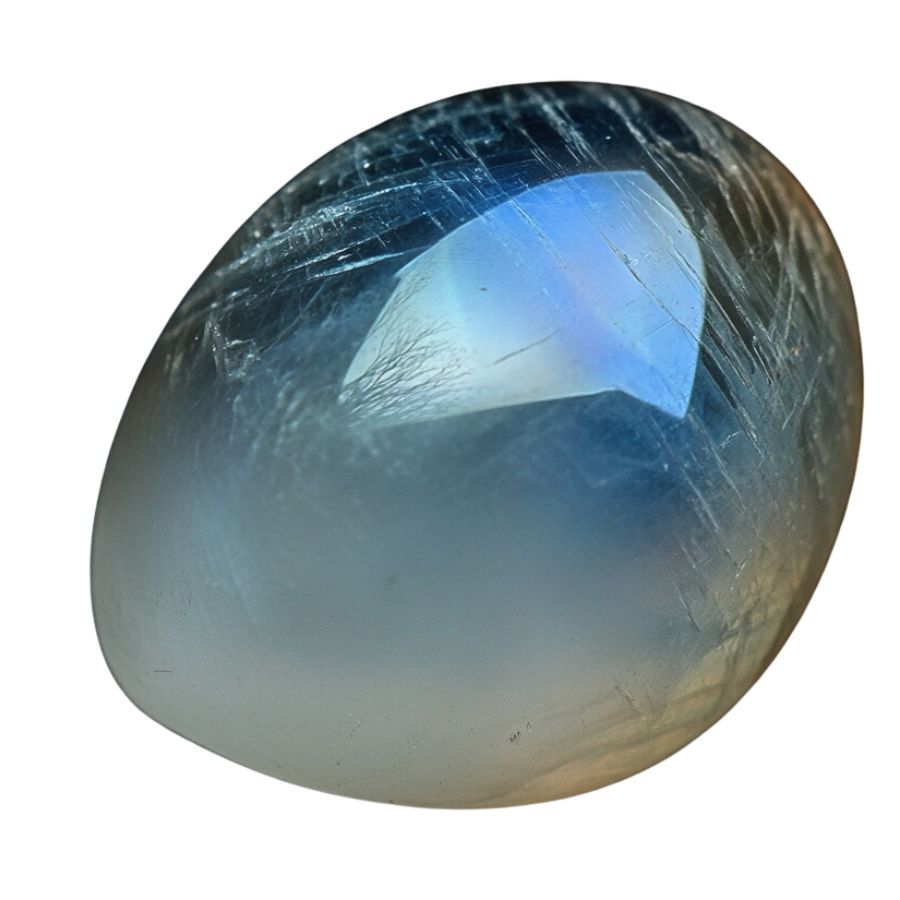
Cat’s Eye Moonstone is known for its striking appearance. It has a translucent body with a narrow band of light that moves across the surface, looking like a cat’s eye. This effect, called chatoyancy, is caused by tiny needle-like inclusions in the stone.
What sets it apart from other moonstones is this cat’s eye effect. While other moonstones might have a blue sheen, Cat’s Eye Moonstone is all about this moving line of light.
The chatoyancy in Cat’s Eye Moonstone is highly sought after. It’s more valuable than standard moonstones because of how rare it is to find high-quality pieces with strong chatoyancy. This unique look makes it a favorite among collectors and stone enthusiasts.
Green Moonstone
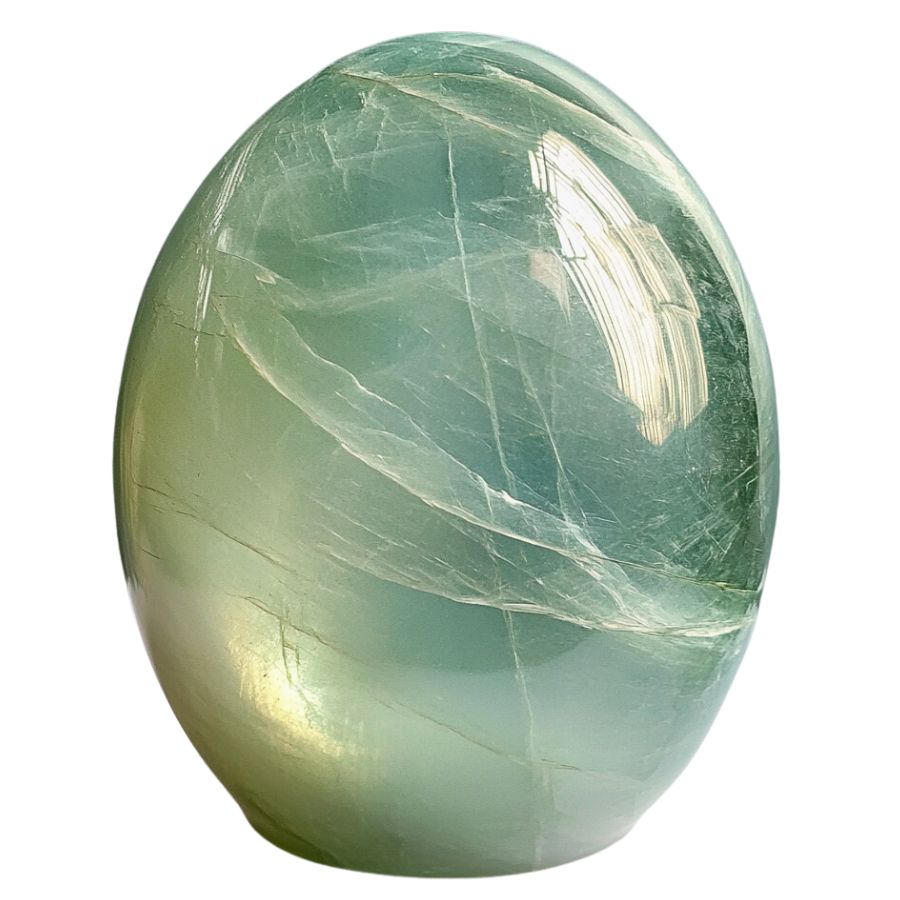
Green moonstone captivates with its soft, pastel green hue and subtle white sheen. Unlike other moonstones, it often displays a velvety texture that’s pleasing to both eye and touch.
Each green moonstone is unique, with color variations ranging from faint green streaks to more pronounced green hues within a milky white base. This diversity means no two stones look exactly alike.
The stone’s green color comes from its high nickel content, making it a rarer find in the moonstone family. This unique composition sets it apart and makes it a favorite among collectors who appreciate its distinctive appearance.
What Rough Moonstone Looks Like
It’s important to understand what a rough moonstone looks like to know what you’re looking for. Here are a few things to keep an eye for:
Check for a Glassy or Waxy Luster
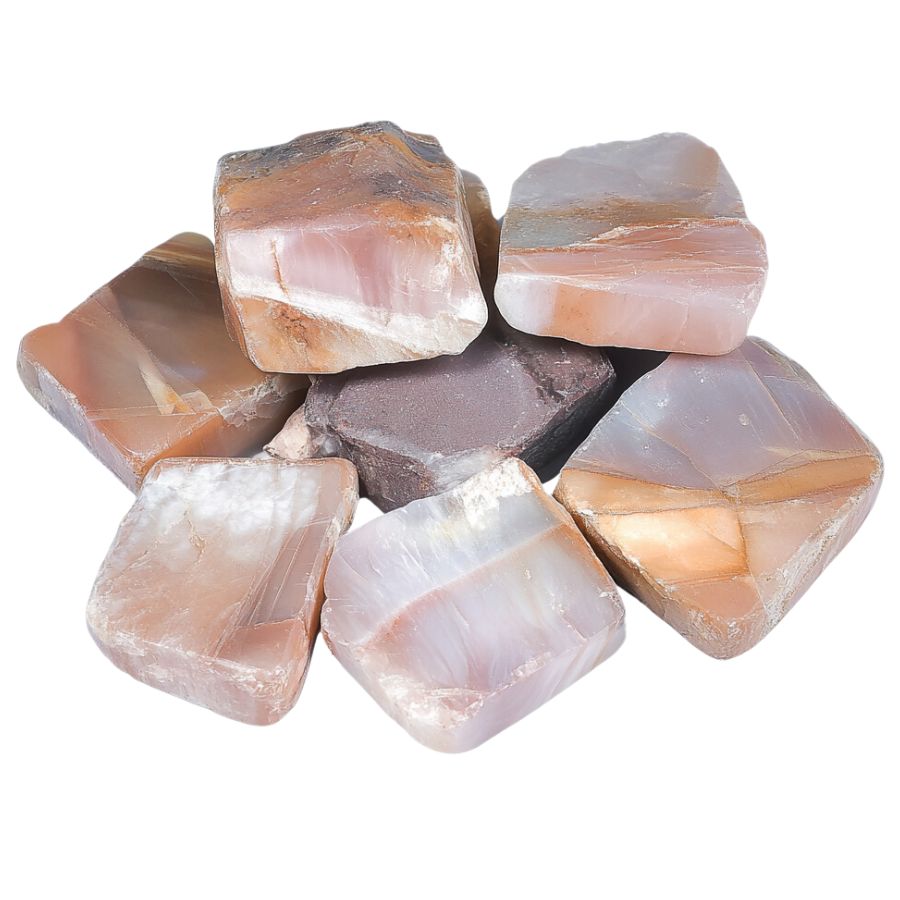
Look for a shiny surface. Moonstone usually has a glassy or waxy luster. It might not sparkle like a diamond, but it has a soft glow.
Hold it up to the light and see if it catches a gentle sheen. If you spot that smooth, silky look, you might have found one.
If you want REAL results finding incredible rocks and minerals you need one of these 👇👇👇
Finding the coolest rocks in isn’t luck, it's knowing what to look for. Thousands of your fellow rock hunters are already carrying Rock Chasing field guides. Maybe it's time you joined the community.
Lightweight, mud-proof, and packed with clear photos, it’s become the go-to tool for anyone interested discovering what’s hidden under our red dirt and what they've already found.
Join them, and make your next rockhounding trip actually pay off.
What makes it different:
- 📍 Find and identify 140 incredible crystals, rocks, gemstones, minerals, and geodes across the USA
- 🚙 Field-tested across America's rivers, ranchlands, mountains, and roadcuts
- 📘 Heavy duty laminated pages resist dust, sweat, and water
- 🧠 Zero fluff — just clear visuals and straight-to-the-point info
- ⭐ Rated 4.8★ by real collectors who actually use it in the field
Assess the Density and Weight
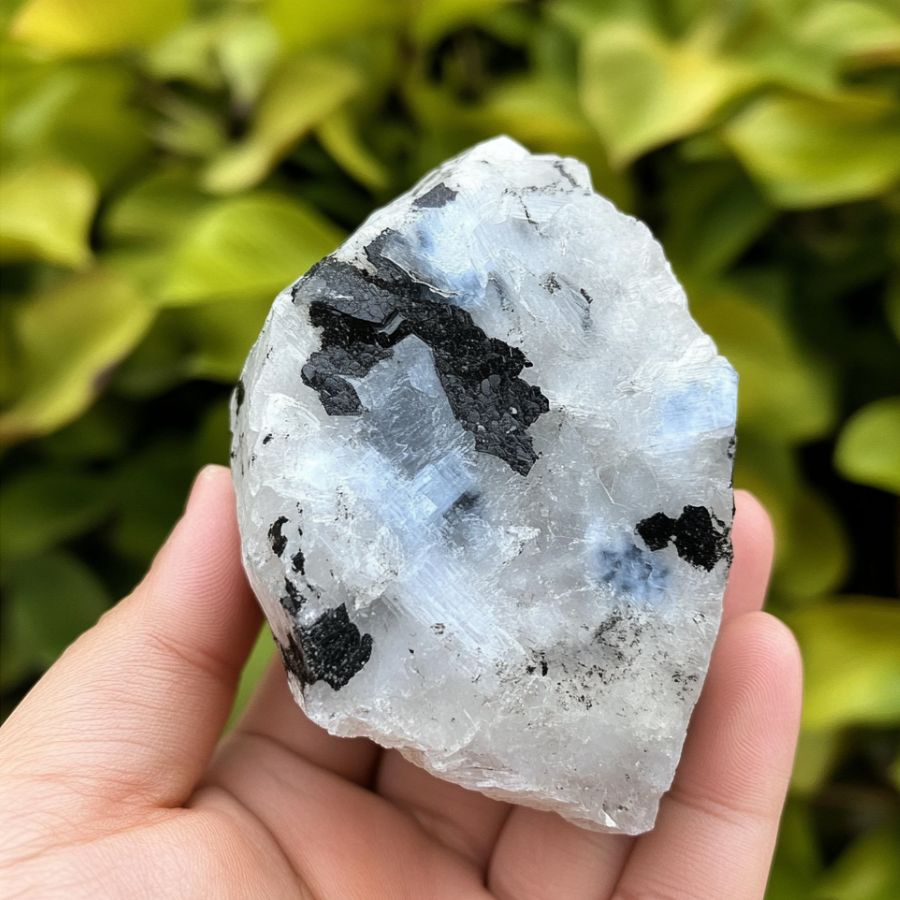
Moonstone feels relatively light for a gemstone. If you pick it up and it feels heavier than expected, it might not be moonstone.
The specific gravity ranges from 2.54 to 2.66, so it should feel somewhat light in your hand.
Notice the Blue or White Sheen
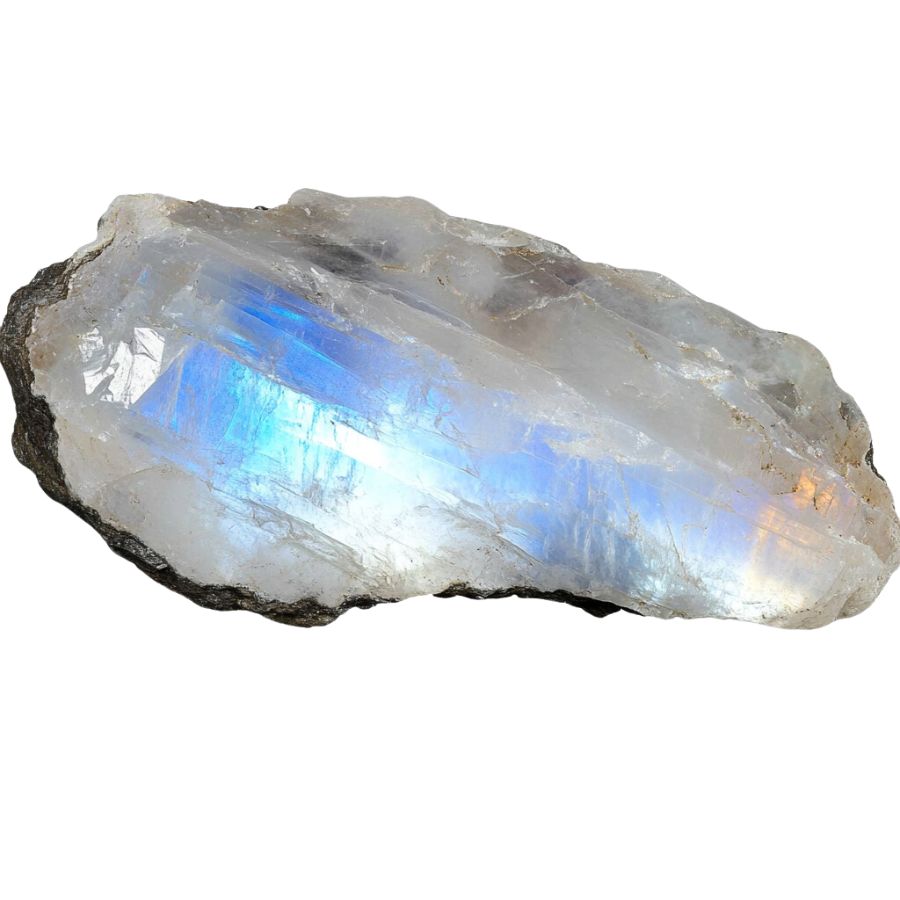
Tilt the stone in your hand. If you notice a blue or white sheen, that’s a good sign. Moonstone has something called adularescence. This is when light reflects inside the stone, creating a soft glow.
It’s one of the key features of moonstone, so keep an eye out for that flash of color.
Look for Rounded Edges
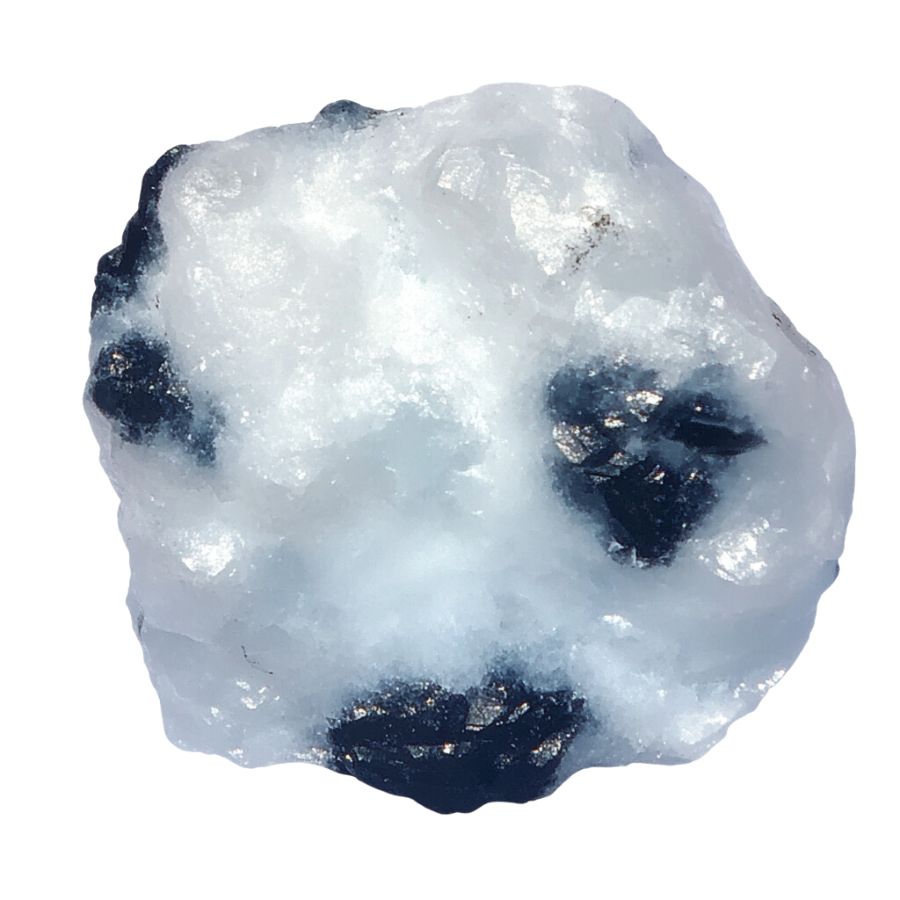
Notice the edges. Moonstone tends to have rounded edges, not sharp ones. This is due to the way it forms in nature.
The rounded shape makes it easier to spot when you’re searching. Keep an eye out for stones with soft, curved edges.
A Quick Request About Collecting
Always Confirm Access and Collection Rules!
Before heading out to any of the locations on our list you need to confirm access requirements and collection rules for both public and private locations directly with the location. We haven’t personally verified every location and the access requirements and collection rules often change without notice.
Many of the locations we mention will not allow collecting but are still great places for those who love to find beautiful rocks and minerals in the wild without keeping them. We also can’t guarantee you will find anything in these locations since they are constantly changing.
Always get updated information directly from the source ahead of time to ensure responsible rockhounding. If you want even more current options it’s always a good idea to contact local rock and mineral clubs and groups
Tips on Where to Look
When you reach the places we’ve listed below, keep these things in mind while searching:
Riverbeds and Streams
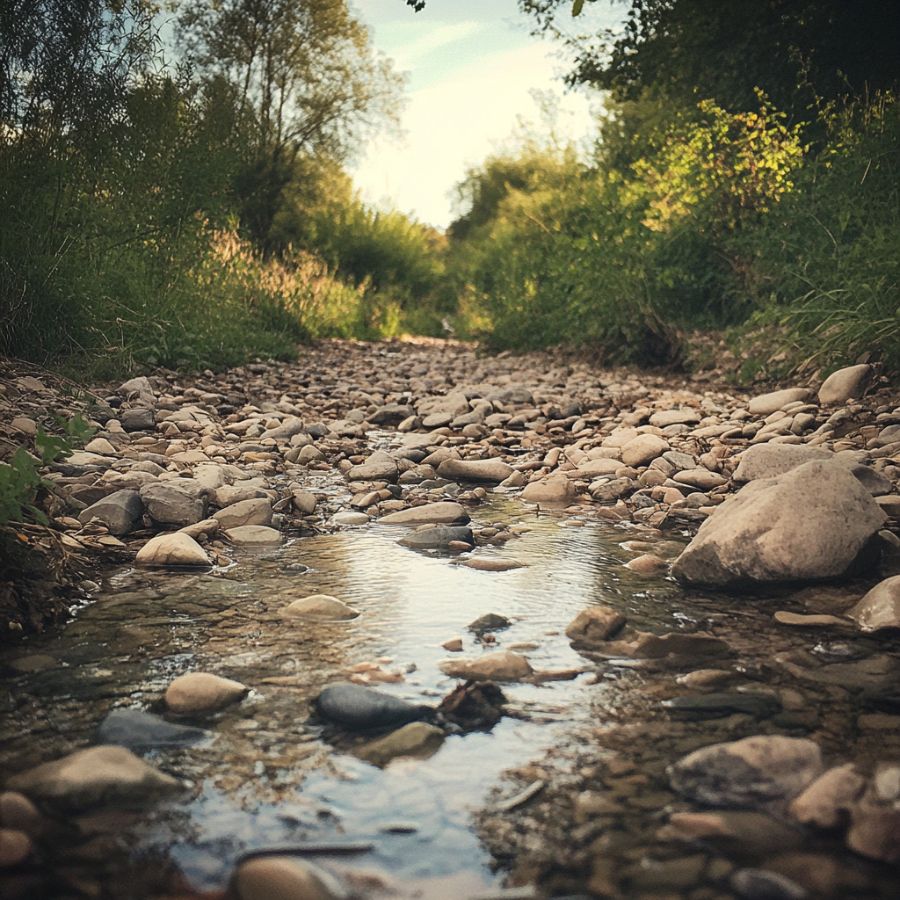
Check out riverbeds and streams. Moonstones can often be found in these areas.
They wash down from the mountains and settle in the gravel. Search along the edges, especially after heavy rain. It’s an easy way to start.
Sandy Beaches

Head to sandy beaches. Look where the sand meets rocks or pebbles. The constant movement of the water helps uncover hidden treasures.
You might find moonstones mixed in with other small stones. The search here can be fun and rewarding.
Old Quarries
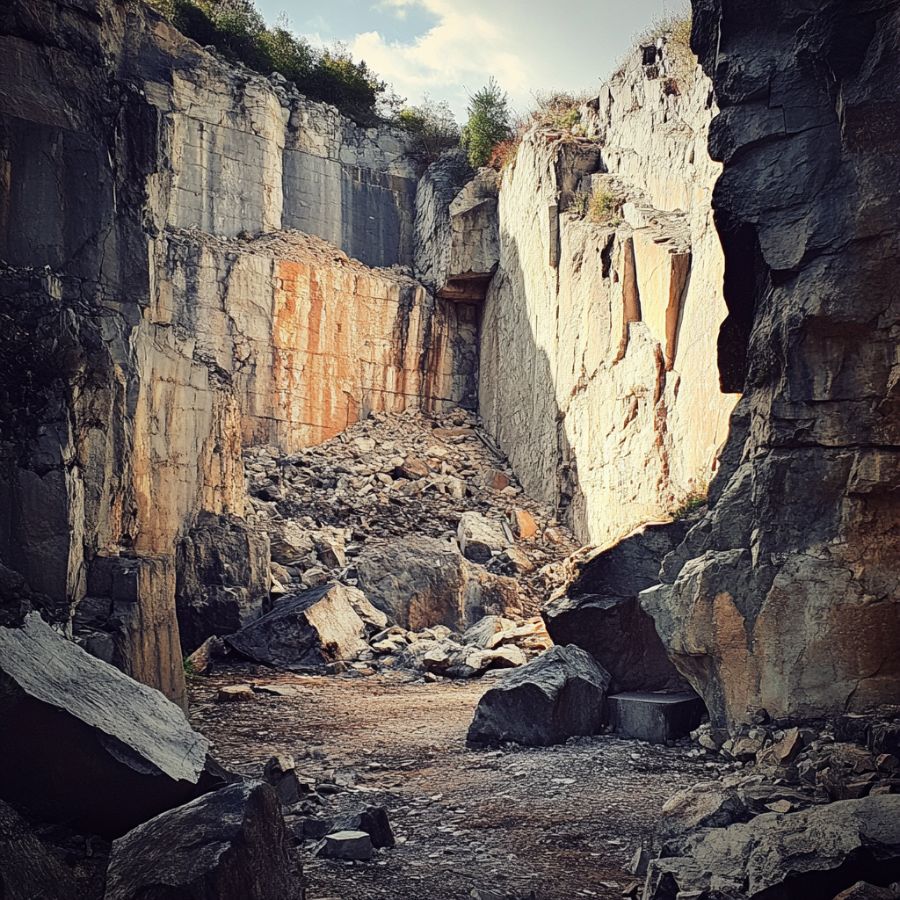
Visit old quarries. These places often have piles of loose rocks and gravel where moonstones might be hiding.
The digging and blasting might have already brought them to the surface. Just a little effort and you might find something cool.
Sedimentary Rocks
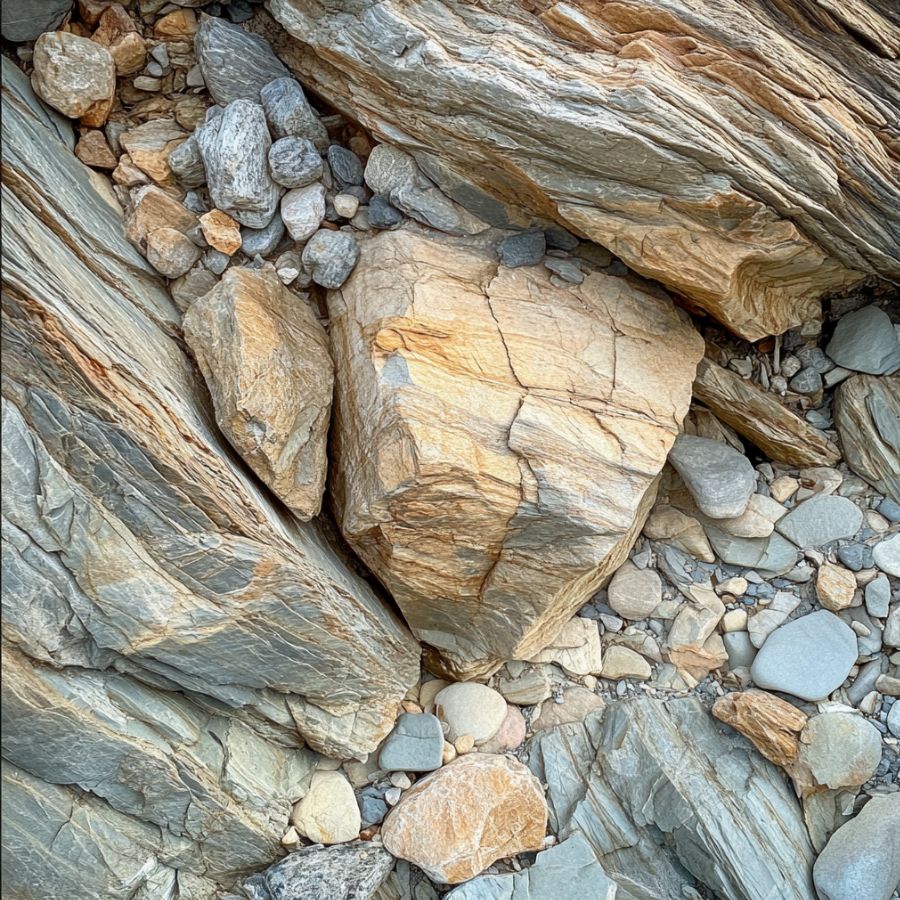
Check sedimentary rock areas. Moonstones form in these rocks, so they’re likely to be around.
Look for outcroppings or places where the rocks have broken apart. The stones might be easier to spot after some weathering.
The types of Moonstone can you find around the state
In Pennsylvania, gem enthusiasts can find two main types of moonstone: orthoclase and blue moonstone.
Orthoclase moonstone is the more common variety in the state. It typically displays a white or cream-colored base with a soft, silvery sheen. This type of moonstone is known for its subtle play of light, often described as a gentle glow.
Blue moonstone, though less common, is also found in Pennsylvania. This variety exhibits a captivating blue sheen or adularescence, which seems to float just beneath the surface of the stone.
Both types of moonstone are prized by collectors and jewelry makers for their unique optical effects and ethereal beauty.
Some Great Places To Start
Pennsylvania has some great locations for those interested in searching for moonstones. Here are a few of the best places to begin your hunt.
Always Confirm Access and Collection Rules!
Before heading out to any of the locations on our list you need to confirm access requirements and collection rules for both public and private locations directly with the location. We haven’t personally verified every location and the access requirements and collection rules often change without notice.
Many of the locations we mention will not allow collecting but are still great places for those who love to find beautiful rocks and minerals in the wild without keeping them. We also can’t guarantee you will find anything in these locations since they are constantly changing.
Always get updated information directly from the source ahead of time to ensure responsible rockhounding. If you want even more current options it’s always a good idea to contact local rock and mineral clubs and groups
Sparvetta Quarry
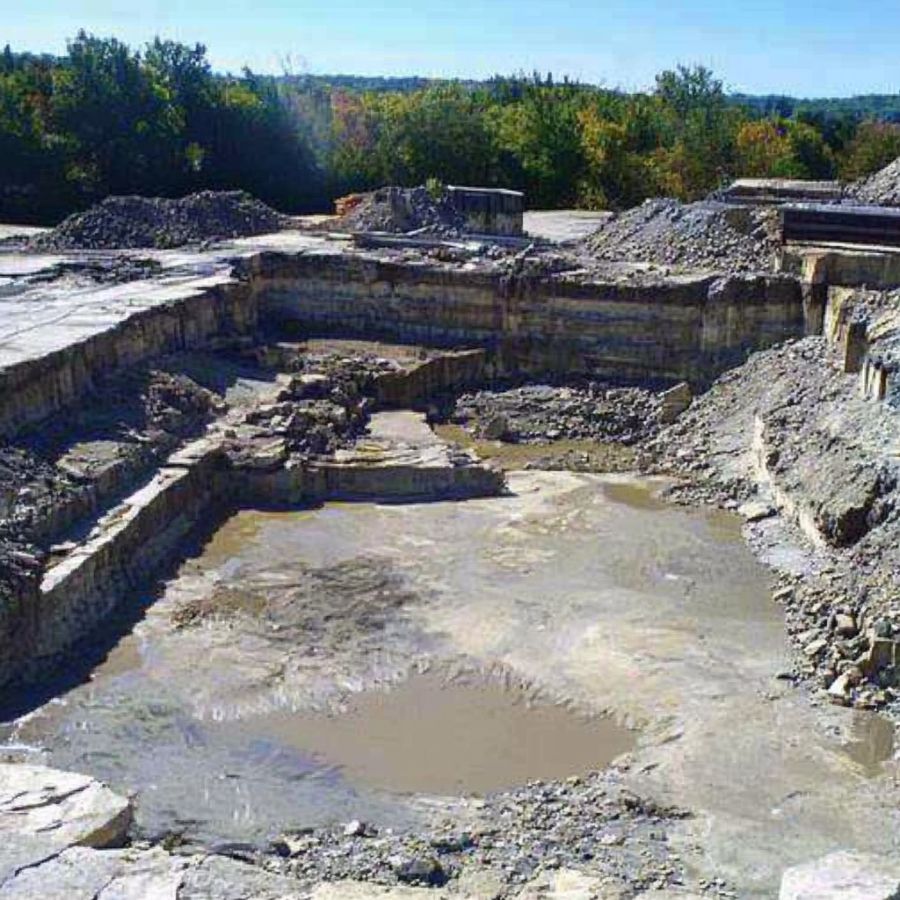
Sparvetta Quarry is an open-pit mine, once bustling with feldspar extraction, now attracts gem enthusiasts seeking moonstones. The quarry’s diverse mineral makeup sets it apart, featuring the waxy mineral deweylite alongside its prized moonstones.
Rockhounds can explore various spots within the quarry to uncover these lustrous gems. From gravelly areas to creek beds and exposed road cuts, moonstones hide in plain sight.
The quarry’s unique geology, shaped by its mining history, creates ideal conditions for moonstone formation.
What makes Sparvetta truly special is its on-site mill, a relic of its feldspar-processing past. This adds a touch of industrial history to your gem-hunting adventure.
Glen Mills area
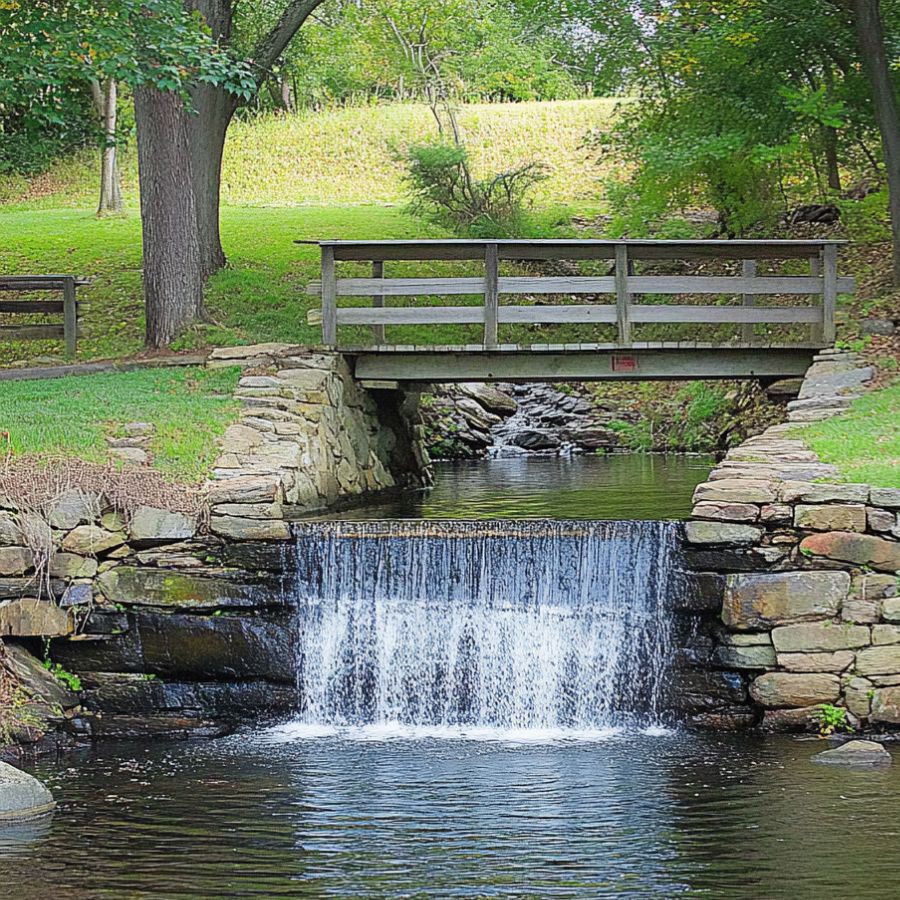
Glen Mills area is located about 27 miles west of Philadelphia in the southeastern part of the state. The area’s diverse rock formations, shaped by ancient geological processes, create an ideal environment for moonstone formation.
The area was historically significant for its paper mills, which were built in the 19th century. The diverse geological formations, including the presence of feldspar, make it a unique spot for rockhounding.
Moonstone hunters can explore the area’s creeks and gravels, where these lustrous stones often hide. Road cuts in the area also offer promising spots to search for moonstones.
What makes Glen Mills special is its abundance of feldspar, the mineral family to which moonstone belongs. This geological characteristic increases your chances of finding these captivating gems.
As you search, keep an eye out for stones with a distinctive blue sheen – a telltale sign of high-quality moonstone.
Feldspar Quarry
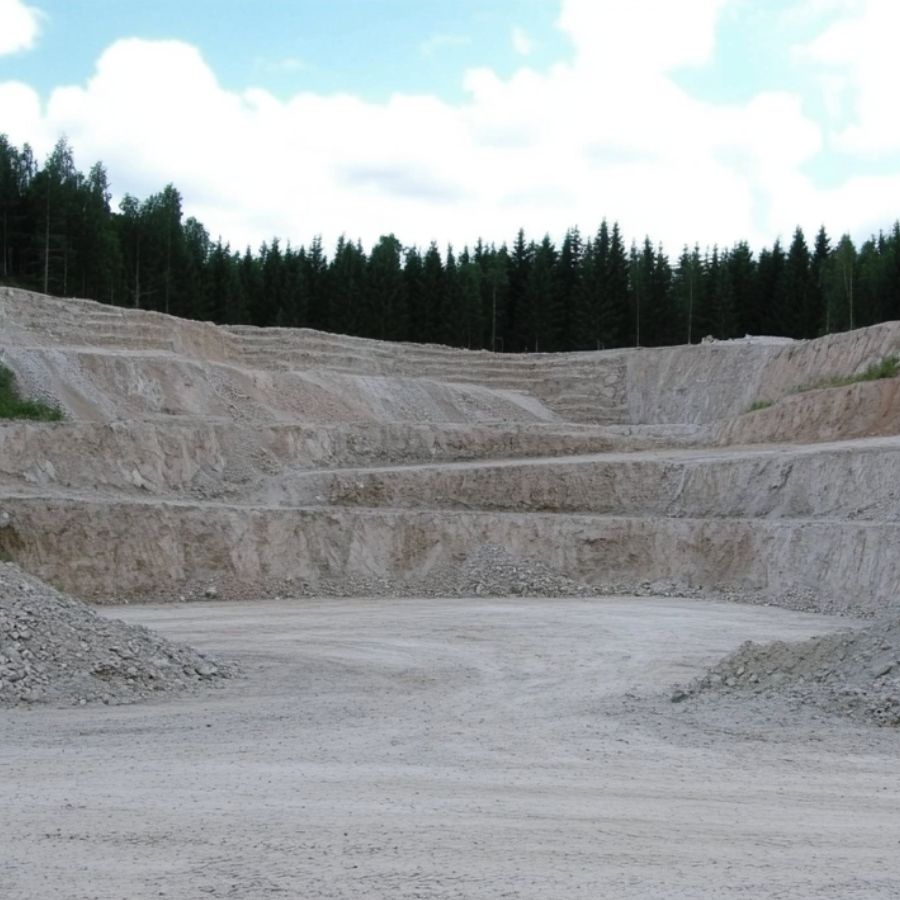
Feldspar Quarry on Mineral Hill in Elwyn is a hidden gem for rockhounds. This small, abandoned quarry in Delaware County boasts a rich geological history that makes it a prime spot for moonstone hunting.
What makes this location special is its unique meta-peridotite formations, rarely seen in the region. These, along with the pegmatite veins, create an ideal environment for moonstone formation.
Enthusiasts can explore the exposed quarry walls and surrounding gravels, where these luminous gems often hide.
The quarry’s history dates back to the early 20th century when it was actively mined for feldspar. Today, it serves as a natural laboratory for geology buffs and mineral collectors.
While searching for moonstones, keep an eye out for other interesting minerals like garnet and muscovite, which are also found here.
Black Horse Area
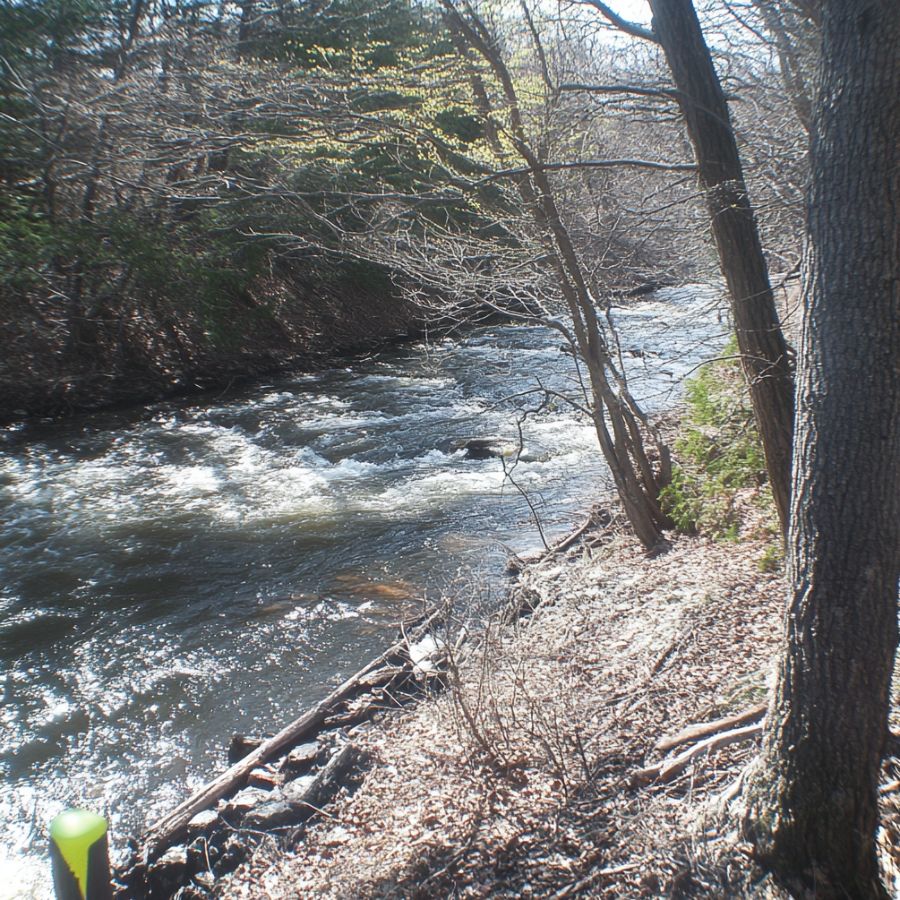
Black Horse area is located in southeastern Pennsylvania, close to the Philadelphia metro area. This small hamlet boasts remarkable pegmatite pits that are a treasure trove for mineral seekers.
These intrusive igneous formations are famous for their large crystals and diverse mineral content.
Moonstones are the star attraction here, found embedded in the pegmatite formations. The area’s unique geology also yields other fascinating minerals like quartz, feldspar, and mica.
Rockhounds can explore various spots to uncover these beauties. The pegmatite pits are prime hunting grounds, while creek beds often reveal stones washed down by rainfall. Even roadside cuts can expose moonstone-rich rock faces.
Black Horse’s pegmatites are particularly noteworthy for their unusually large crystal sizes, making it a prime spot for finding high-quality specimens.
Vanartsdalen Quarry
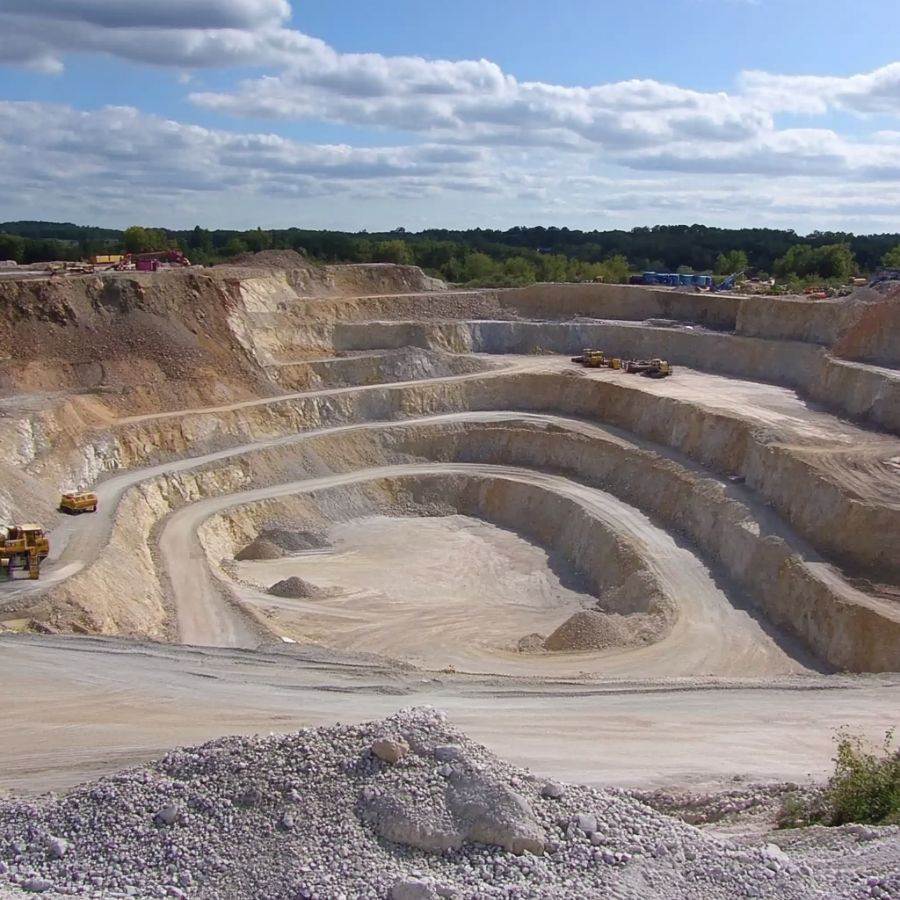
Vanartsdalen Quarry sits in Bucks County, Pennsylvania. The quarry is in Lower Southampton Township, in the southeast part of the state.
What’s cool about this place is that it has got rocks from way back in the Precambrian era. You’ll see metagabbro and something called scapolite metagabbro. These old rocks help moonstones form.
There’s also Franklin Marble here, which is pretty special. You can look for moonstones in the gravel areas, creek beds, and places where roads have been cut through rocks. Each spot might hide different moonstone treasures.
The quarry used to be a busy work site. Now, it’s quiet and perfect for rock hunting. People come here to enjoy nature and search for beautiful stones.
Remember, moonstones can be tricky to spot. Look for stones with a blue shine when you turn them in the light.
Places moonstone has been found by county
After discussing our top picks, we wanted to discuss the other places on our list. Below is a list of the additional locations where we have succeeded, along with a breakdown of each place by county.
| County | Location |
| Delawarey | Lenni Area |
| Delaware | Newtown Square Area |
| Delaware | Sycamore Mills Area |
| Lebanon | just NW of a road at Big Hill (on old Rte. 322), extensive mine dumps |

